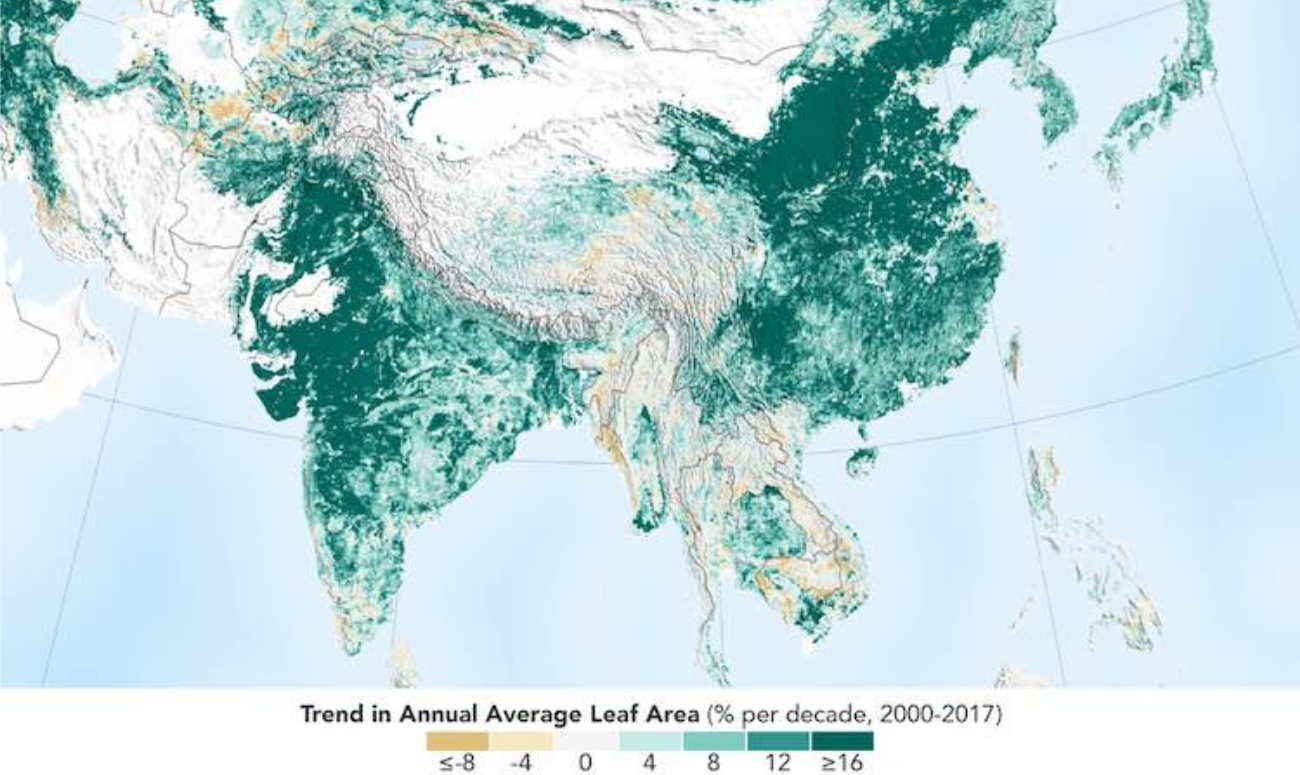India and China have helped the Earth get greener over the last 20 years! NASA found this and reported in the journal, Nature Sustainability. Afforestation projects in India and China have together reversed the browning of the earth and made it greener than it was in the mid-1990s.
Completely away from popular perception, that says that due to rapid industrialization, India or China or both, may be the real culprits in the browning of the planet and could be the prime reason for Climate change. It’s not. NASA, a US agency, has proven so. The maps that they have come up with, show some excellent afforestation that has taken place in the past few years gone by in the two countries.
For example, recently through afforestation projects in India 50 million trees through 800,000 people were planted in one day. One day, one must get that. One must appreciate all the background work done by various groups including relevant government departments to make such a step occur successfully.
The Ministry of Environment and Forests over the last decade has usually been a very proactive department in India. Planning afforestation projects in India, lending teeth to green initiatives and has been very vocal. But what is lesser known is the work put in by the Ministry of Agriculture, the Irrigation departments in the various states and the Block Development modules under Panchayati Raj in all states of India. The way agriculture has been harnessed is impressive, to say the least. It is another thing that farmers have overproduced and are not getting the kind of remuneration for that as they would require.

But, the lands have all turned green!
China, on the other hand, has rigidly kept land for agriculture and processed that land diligently to land up in a more greener state. They, of course, have the advantage of government directives that rule over everything else.
Forests, in India, have grown through rigorous afforestation that has taken place. NGOs and Individuals have also come in and done some great work. We have come a long way from the Chipko Andolan days. When villagers had to hug their trees to prevent government contractors from cutting down trees in Uttarakhand. A single man afforested an entire island in the middle of Brahmaputra in Assam. These are compelling stories that India has been churning out for some time now.
The Indian way of life has been complementary to the vegetation around the house and fields. We draw sustenance from the plantations. We also have, in the Hindu religion, a healthy respect for trees, plants, fruits, leaves, and roots. This leads us to create harmony with nature around us. It has been there for ages. It will continue to be there, hopefully, if the water tables survive.
Yes, there is a concern about the depleting water tables in some parts of India. It is because of some practices that do not understand the recycling of water perfectly, especially in urban areas. But, if that can be corrected, we will continue to lead in green objectives and can continue to be a benchmark for the world at large.
Also Read: 5 WOMEN WHO CHANGED THE FACE OF INDIAN POLITICS































